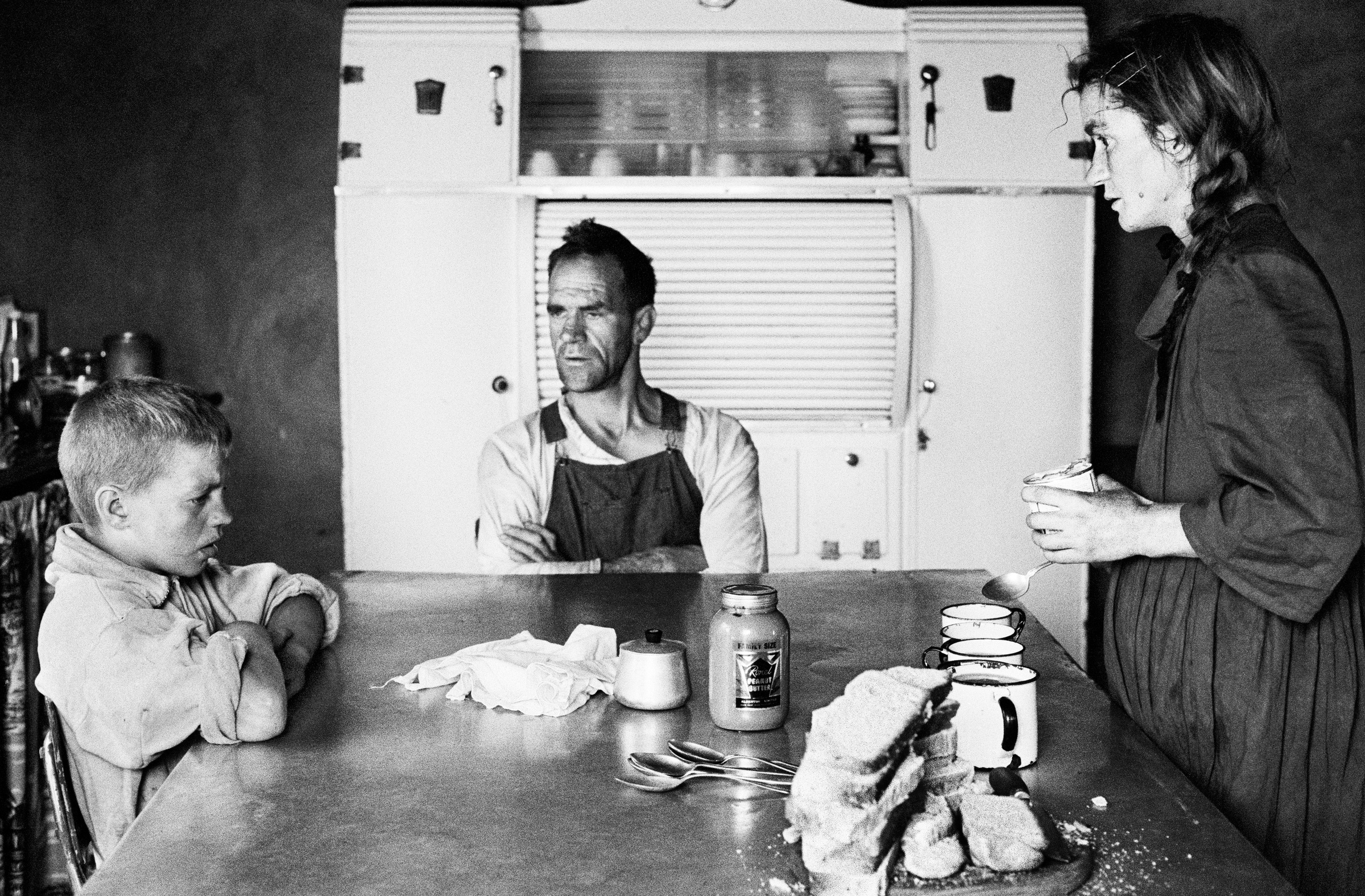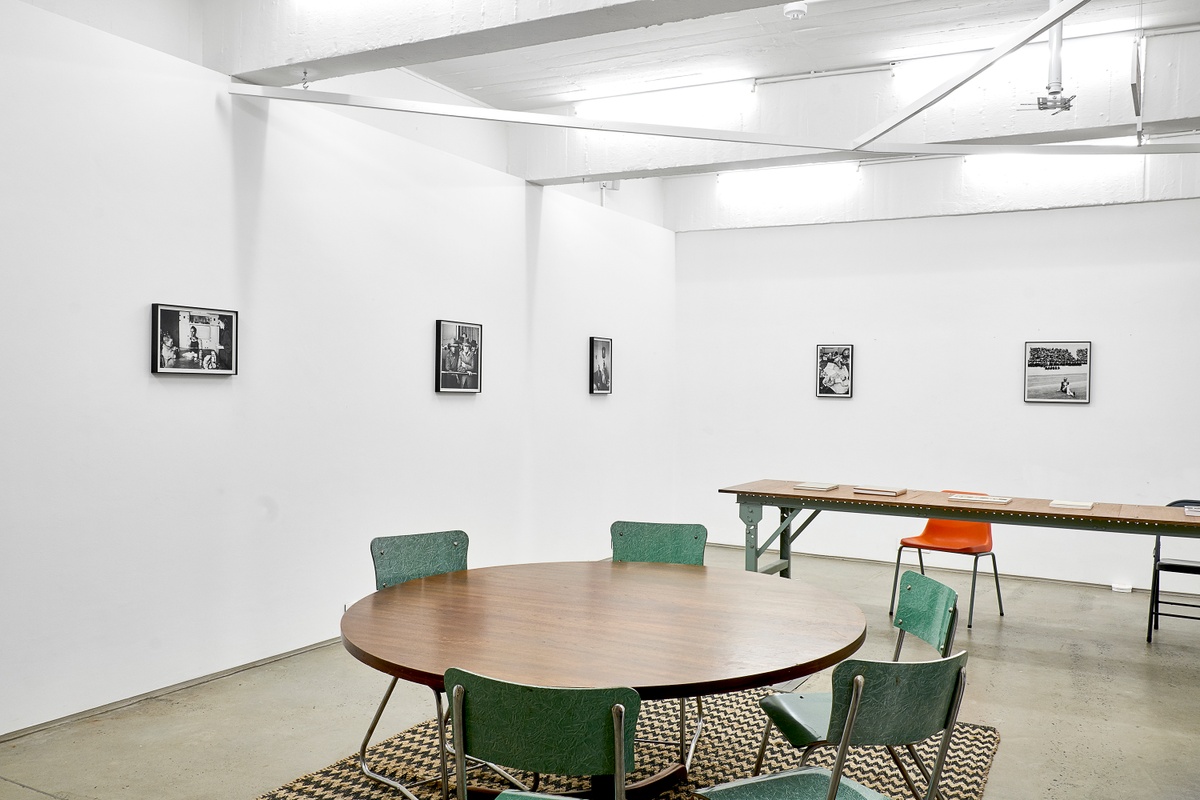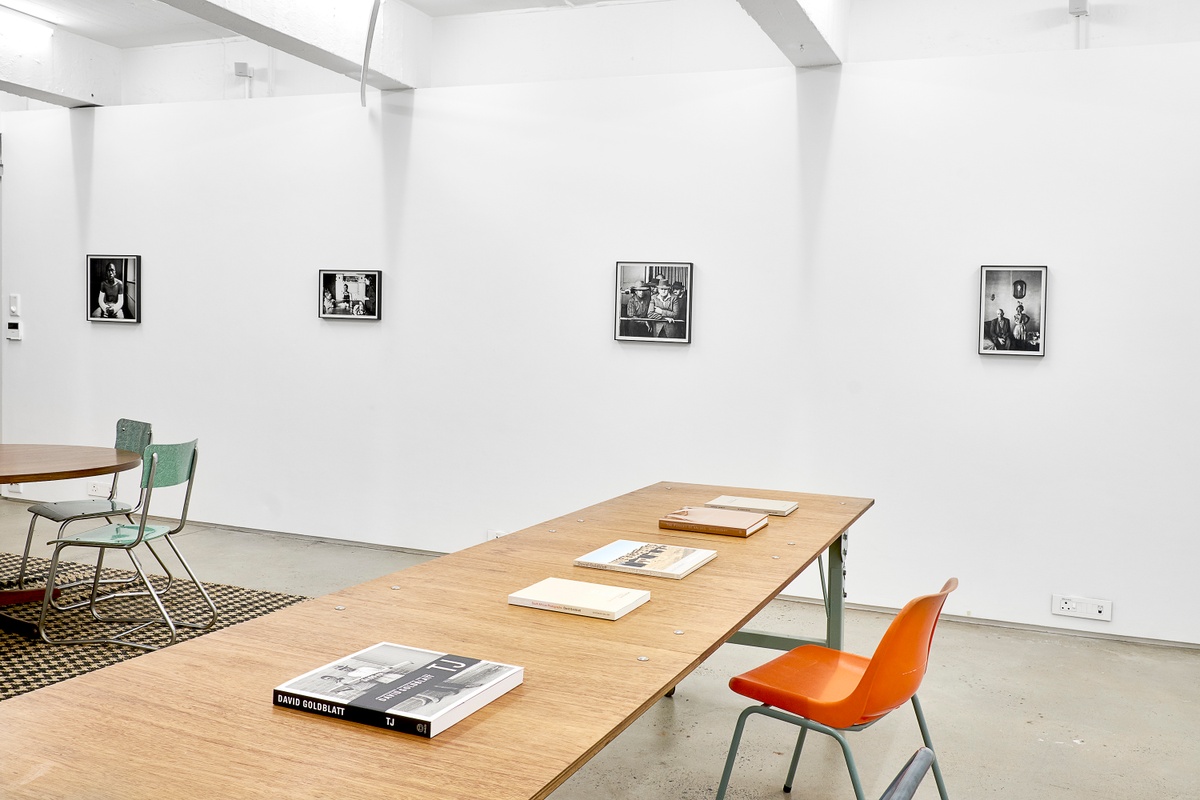David Goldblatt

A plot-holder, his wife and their eldest son at lunch first appeared in Goldblatt’s Some Afrikaners Photographed (1975). The photo-essay offers something of an overview of Afrikaans life and culture at the time, from statesmen to farmers, their wives and children. It is, above all, a study in contradiction. “I recognised increasingly that their values were very contrary,” Goldblatt said of the Afrikaners he photographed. “I knew that they were racist almost in their blood, and yet I couldn’t deny the warmth and the generosity of many of these people.” That Afrikaners were at the time the dominant political influence, their mandate one of racial segregation and white supremacy, seemed to Goldblatt so often irreconcilable with the intimate lives of ordinary Afrikaans people.
This photograph is included in Some Afrikaners Photographed (1975); Fifty-one Years, 2001; Some Afrikaners Revisited, 2007; Kith Kin & Khaya, 2011; The Pursuit of Values, 2015; and Structures of Dominion and Democracy, 2018.
b.1930, Randfontein; d.2018, Johannesburg
“I was drawn,” the late photographer David Goldblatt wrote, “not to the events of the time but to the quiet and commonplace where nothing ‘happened’ and yet all was contained and immanent.” A preeminent chronicler of South African life under apartheid and after, Goldblatt bore witness to how this life is written on the land, in its structures or their absence. Unconcerned with documenting significant historic moments, his photographs stand outside the events of the time and yet are eloquent of them. Through Goldblatt’s lens, the prosaic reveals a telling poignancy. Even in those images that appear benign, much is latent in them – histories and politics, desires and dread. His photographs are quietly critical reflections on the values and conditions that have shaped the country; those structures both ideological and tangible. Among his most notable photobooks are On the Mines (1973), Some Afrikaners Photographed (1975), In Boksburg (1982), The Structure of Things Then (1998), and Particulars (2003).

